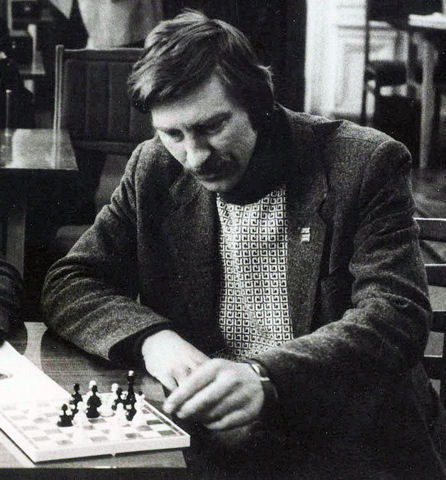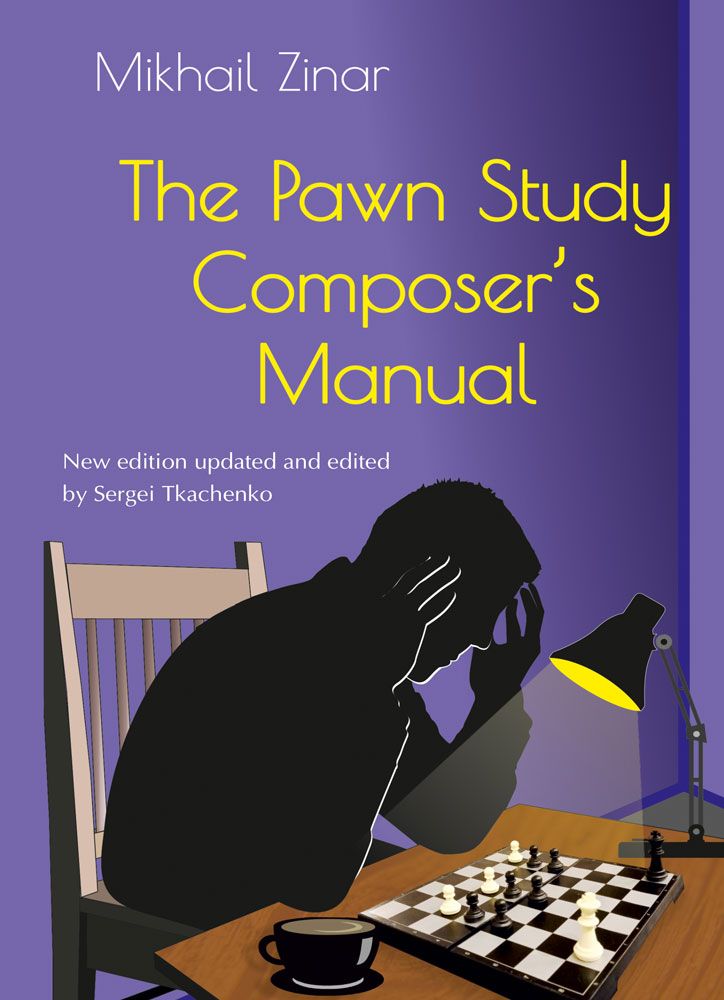‘Study endgames!’
How many times have we heard that piece of advice? Far more often than we have followed it, that is for sure.
Now that the New Year is here, perhaps it is time to change old habits and to embrace the advice instead of ignoring it yet again. One endgame book I am enjoying very much is The Pawn Study Composer’s Manual by Mikhail Zinar (new edition updated and edited by Sergei Tkachenko in 2022).
The book already has a substantial history, even before Elk and Ruby gave it their typical full treatment:
‘Have you ever thought about trying your hand at composing endgame studies? Probably not, it always seemed far too difficult. But now, your chance to learn the tools is finally here! Mikhail Zinar’s composition manual, first published in Ukraine in 1990 with a 100,000 print run that has long sold out, and now updated and revised by Sergei Tkachenko, reveals the secrets that will give you a head-start in composing chess poetry!’
The author is the perfect guide to the subject:
‘Mikhail Zinar (1950-2021) was considered the world’s leading pawn studies composer in his life-time, inheriting the mantle from Nikolai Grigoriev. He composed several hundred studies in his career, winning multiple prizes.’

Of course, not everybody would like to branch out into the world of composing chess studies. If they do, then this is a perfect place to start, of course – yet it is much more versatile than a single mission would have it. Anyone who is even remotely interested in improving their understanding of pawn endings will love studying this book. The examples start off on a very accessible level and then become increasingly difficult and there are just under 400 positions to ponder.
Pawn endings often require perfect calculation; one slip can prove fatal, because there is so little material left with which to fight back after a mistake. Therefore, immersing oneself in pawns endings will automatically improve calculation skills – and lots more besides. The author shows themes which start off relatively simply but then build up dramatically.
Study 1
Presumably, this classic by Richard Reti will look familiar to most readers:
Richard Reti
Ostrauer Morgenzeitung und Handelsblatt, 1921
White to play and draw
I don’t want to spoil the experience of anyone who is seeing this for the first time, but I agree with the author when he says: ‘This study amazes everyone who sees it for the first time.’
As he explains: ‘When you look at the position, it’s impossible to believe that the goal is achievable at all. The white pawn cannot promote – it’s easily stopped by the black king. The white king cannot make it in time to help his pawn – his black counterparty will take the white pawn three moves earlier. The attempt to capture the black pawn looks even more naïve – the white king will need three moves in a row to do that!’
Over to you, dear reader.
Study 2
Then, using the Reti idea as a starting point, more studies have been composed, using the same meagre amount of material.
H. Adamson
The Chess Amateur, 1922 (version, 1990)
White to play and draw
Study 3
Here is another one to test your powers:
E. Pogosyants
Prapor Yunosti, 1956
White to play and draw
The author explains plenty of other themes, of course, including checkmate, stalemate, the breakthrough, zugzwang and underpromotion.
Study 4
Here is one more example from the book and this time I will present only the very end of the study, complete with the last few moves, as it is so difficult:
N. Grigoriev
Shakhmaty v SSSR, 1945
White to play and win
This one combines the motifs of stalemate and underpromotion.
This book is crammed full of such extraordinary examples. It is well known that one learns more easily if one is enjoying the experience and that is certainly the case with The Pawn Study Composer’s Manual. Let’s make 2023 the year in which we all study endgames – and enjoy them, too!
Sean Marsh
Have any questions or thoughts? Leave us a comment down below!
- The Life and Games of Dragoljub Velimirovic (Volume 2) by Georg Mohr and Ana Velimirovic-Zorica - July 23, 2024
- Review: Chess Informant - June 7, 2024
- Is it time for a Modern Benoni revival - April 17, 2024

